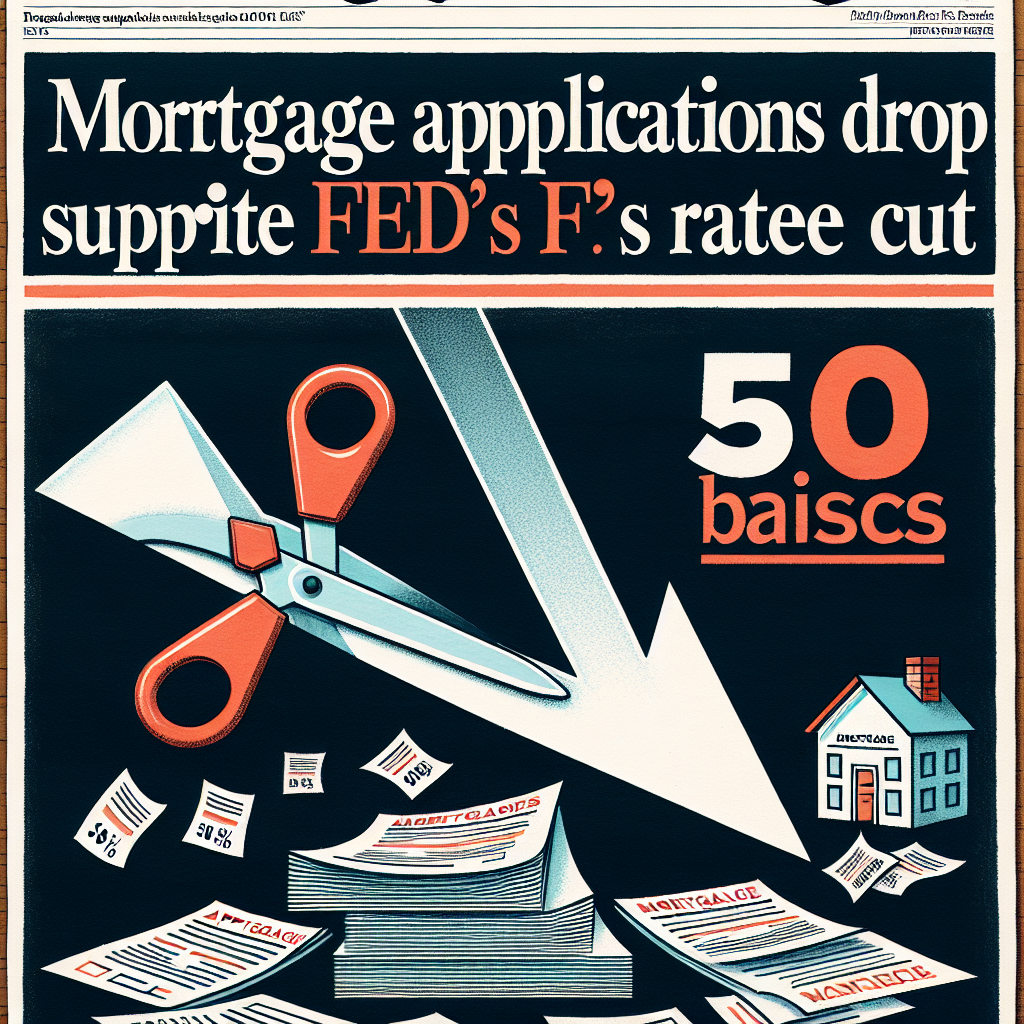Mortgage Applications Drop 41% Despite Fed’s 50 Basis Point Rate Cut
The recent decision by the Federal Reserve to cut interest rates by 50 basis points was expected to stimulate the housing market. However, contrary to expectations, mortgage applications have plummeted by 41%. This unexpected decline has left economists and market analysts puzzled, prompting a deeper investigation into the factors contributing to this downturn.
Understanding the Fed’s Rate Cut
The Federal Reserve’s decision to cut interest rates is typically aimed at encouraging borrowing and spending by making loans cheaper. A 50 basis point cut is significant, as it reduces the cost of borrowing for consumers and businesses alike. Historically, such cuts have led to increased mortgage applications as potential homeowners rush to take advantage of lower rates.
Factors Contributing to the Decline in Mortgage Applications
Despite the favorable conditions created by the rate cut, several factors have contributed to the decline in mortgage applications:
- Economic Uncertainty: The current economic climate is fraught with uncertainty, driven by global events and domestic challenges. Potential homebuyers may be hesitant to commit to long-term financial obligations amidst fears of a recession.
- Inflation Concerns: Rising inflation rates have eroded consumer purchasing power, making it more difficult for individuals to save for down payments or afford monthly mortgage payments.
- Housing Market Dynamics: The housing market is experiencing a supply-demand imbalance, with limited inventory driving up home prices. This has made homeownership less accessible for many potential buyers.
- Stringent Lending Standards: Lenders have tightened their lending criteria in response to economic uncertainties, making it more challenging for borrowers to qualify for mortgages.
Case Studies: Regional Variations
While the national trend shows a decline in mortgage applications, regional variations provide a more nuanced picture:
- California: In California, high home prices and a competitive market have deterred many potential buyers, leading to a sharper decline in mortgage applications.
- Midwest: The Midwest has seen a more moderate decline, as lower home prices and a stable job market have provided some insulation against broader economic trends.
- Southern States: In states like Texas and Florida, the decline has been less pronounced, with continued population growth and economic expansion supporting housing demand.
Implications for the Housing Market
The drop in mortgage applications has several implications for the housing market:
- Slower Home Sales: With fewer mortgage applications, home sales are likely to slow, impacting real estate agents, builders, and related industries.
- Price Adjustments: A decrease in demand may lead to price adjustments, particularly in overheated markets, potentially making homes more affordable in the long run.
- Policy Considerations: Policymakers may need to consider additional measures to support the housing market, such as targeted incentives for first-time homebuyers.
Conclusion
The 41% drop in mortgage applications, despite the Federal Reserve’s 50 basis point rate cut, underscores the complexity of the current economic environment. While lower interest rates typically stimulate borrowing, factors such as economic uncertainty, inflation, and housing market dynamics have dampened consumer confidence and demand. As the situation evolves, stakeholders in the housing market will need to adapt to these challenges, exploring innovative solutions to support homeownership and economic stability. Ultimately, understanding the interplay of these factors will be crucial in navigating the path forward.



